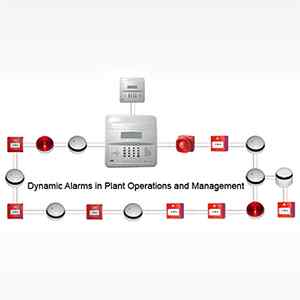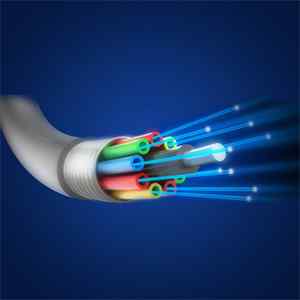How to choose the treatment of its Technical Alarms?
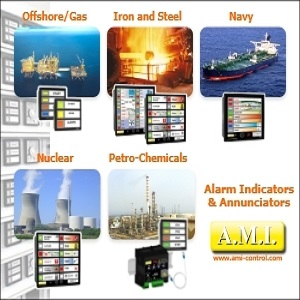
What is the best technical solution to adopt?
What are the prices of each and what are their security limits?
Whatever the field of activity (from the most dangerous activity to the one with the least risk), here is an example of the questions that can be asked.
The answer is not simple and depends on several factors:
- What is the level of risk? (which is joined by another question: what is the general activity of the company to be protected)
- What is the level of risk of the part of the installation concerned in the company?
- According to the organization of the company, and according to the party to be protected, what is the master plan of the treatment to be adopted (locally only, locally with transfer to a central, central only).
(The answer to these questions must take into account the study of the consequences of possible breakdowns or malfunctions for each of the elements that must constitute the technical alarm processing chain).
- What is the price we want to put in relation to the desired level of security?
Local mode and/or centralized mode.
The "local mode" is a processing and visualization of the alarms on the place where the alarms can occur. (or at the nearest substation).
- Present locally or in the nearby substation, an experienced operator will be able to judge the state of the installation at a glance.
- During modifications or additions, interventions will be limited to the local level.
- The local processing elements can serve as retransmission elements to a remote centralizer.
- In the event of an anomaly (equipment failure), the search will be limited to the local level, the rest of the installation remaining functional.
“Centralized mode” is a grouping of all alarms in a general control room which can be remote. The use of powerful systems with synoptics makes it possible to group information from other parts of the installation, to integrate functions and calculations from the manufacturing process and to obtain a general treatment of the installation.
However, used alone, a certain number of constraints must be taken into account:
- Greater complexity due to a greater number of information to be processed.
- As distances increase, there is a risk of being cut off from local information (wire cut, loss of link or transmission, etc.)
- Less easy modification (in case of need for extension,...) with risk of disturbances on the manufacturing process.
- In the event of malfunction or breakdown, loss of local information.
Depending on the level of security you want to obtain, it is possible to choose both solutions.
- Keep a local treatment ensuring perfect visibility of the installation.
- Return to the supervisor all or part of the information processed locally.
Note that a centralizing supervisor needs local transmission modules. The local alarm processing elements can be used for transmission to the centraliser. In terms of costs, having visibility in local mode, it is often possible to carry out groupings which make it possible to reduce the number of postponements.
Automaton or alarm panel?
An alarm panel is often an automaton with an appropriate and fixed program. This program allows you to make many simple settings such as input delay, NO or NC contact direction and many more. This program is the result of the manufacturer's experience in this field of activity and above all of the accumulation of all the specific requests of its customers. A guarantee of security is therefore certainly the length of existence of this manufacturer when it has been able to improve its products.
Alarm management is performed by the basic program and cannot be modified. Only configuration is possible. An alarm panel is operational quickly. Its program is included, just connect the power supply and at least one input. An “automaton” solution will require the creation of a program which can take several months to complete, with risks of anomalies which will be detected much later. On the other hand, an alarm panel often has high disturbance tolerances (supply voltage often higher than +/- 30%, AC/DC power supply. Adding channels to an alarm panel is quick. Simply connect an input contact and modify the setting. An inexperienced technician is able to achieve this.
One may be tempted to process technical alarms with a programmable logic controller.
- An automaton requests the creation of a program which can take several months to complete, with risks of anomalies which will be detected much later.
- This program can be carried out “on demand”. but this possibility adds in-depth control requirements.
- Adding a channel requires a modification of the program, therefore a stoppage of the alarm control. It is necessary to hire a programmer. And in some cases, it is impossible to entrust the modification to the person who made it (due to departure or other).
Standardization and modularity with alarm panels:
The choice is limited to:
- Choose a panel with a number of lanes greater than the immediate need. These dimensions can be significant. The model chosen is very likely to be different from the other models present, which will make interchangeability impossible in the event of a breakdown.
- Choose the "modular" solution and use as many panels as necessary for the part of the installation concerned. It is always possible to use several panels to obtain the desired number of lanes. These panels can be grouped electrically. Several panels are easier to implant than a large model. If one of them fails, the others will continue to operate. In the event of a breakdown and with a standard model, maintenance will be easy (and economical).
All the following models are LEDs with a lifespan of well over 10 years.
 Visualization (indicator panels): PAN35/45, J1805/J2005/J2405
Visualization (indicator panels): PAN35/45, J1805/J2005/J2405
Simple indicator or annunciator panels are LED panels used to indicate states or positions that do not have danger characters.
They are used to indicate a state of the installation intended to inform an operator.
Example :
The valve is open or closed / the cycle is in progress or finished / The contactor is Closed or Open.
They can be with 1, 3, 4, 8, 12 or 24 inputs.
Although the current trend is to reduce or even eliminate this type of product, it must be recognized that they are an effective aid for understanding the instantaneous state of the installation (and especially in the event of stress).
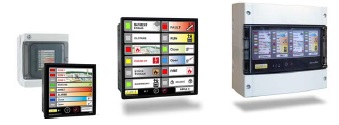 “Technical alarm” panels: J1905, J3105, J3500, Alarm Box
“Technical alarm” panels: J1905, J3105, J3500, Alarm Box
Technical alarm panels are LED automatons used to process technical alarms.
They constantly check the "contact" inputs, and, in the event of a change, process the information according to their settings, store it, display it in flashing mode until the operator acknowledges it. Each panel processing its own inputs, detection is very fast. Note that many processes may be different depending on the configuration.
Remote transmissions to a centralizer by Bus are possible.
A failure on one panel does not cause a failure on the others which will continue their control and remain operational. It is a multitasking environment.
The electronics of these products are often reinforced to withstand difficult environments. Some models are mixed and can display simple signals (status, without memorization) and alarms.
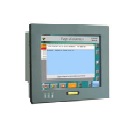 Centralization: Le Panel PC
Centralization: Le Panel PC
The Panel PC is an example of a touch screen centralizer which allows the centralization of 63 remote panels (i.e. approximately 756 inputs) type J3105 or J3500 in RS422/RS485. It includes a specific technical alarm program with history and printing. Easy to start, it can be an alternative for those who do not wish to create a restrictive program.
“SCADA” or Programmable Automaton solutions
It is always possible to create Supervisor or PLC solutions with synoptics. However, it is necessary to take into account the delays of realizations, the complexity which often appears at the time of the modifications.
The prices : In these difficult times, the purchase price is an essential element in choosing the solution to be adopted. But everything has to be taken into account. An automaton is a standard product and its purchase price may seem lower than an “alarm panel” solution.
- it is incapable of functioning without a program (and therefore a programmer). So you have to add time.
- In case of modification, who will be able to intervene on the program in the absence of the programmer? And this adds time (and risk). In the “multiple panel” solution,
even an inexperienced operator can carry out an extension of a few lanes.
- If a PLC failure occurs, all alarm management risks being disrupted (which is rarely the case with alarm panels).
The choice may vary on each installation depending on manufacturing constraints. But the least expensive policy often leads to situations where the end customer is obliged to replace his alarm installation because he is unable to manage or extend it. And the worst situation is to continue operating while having a control facility down.




